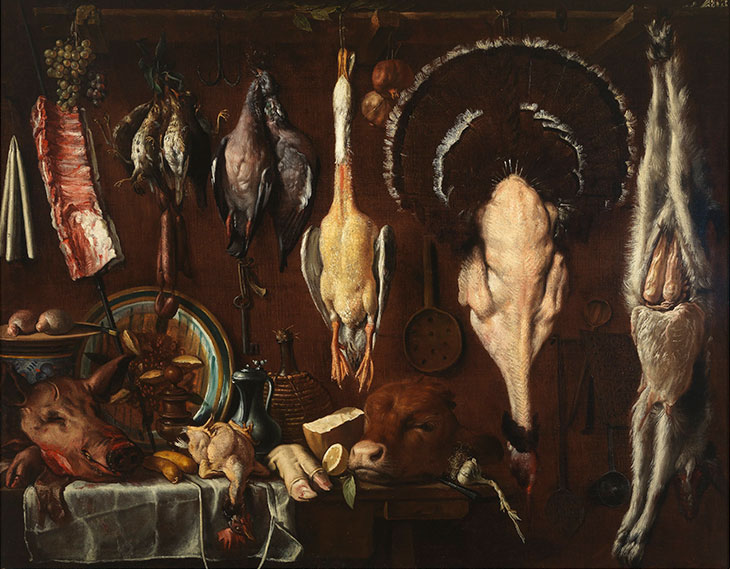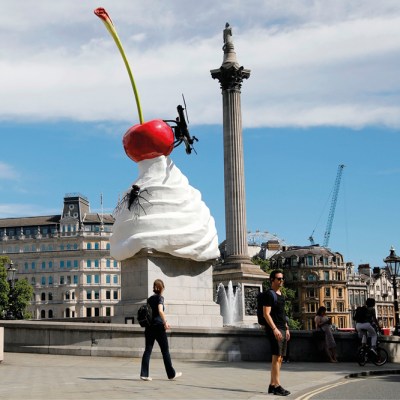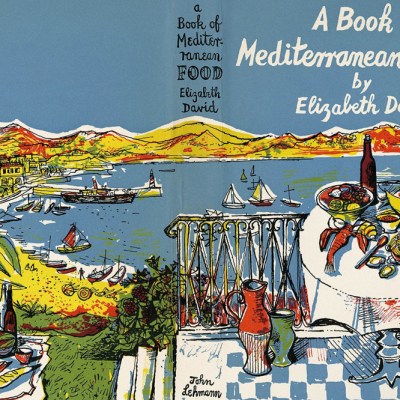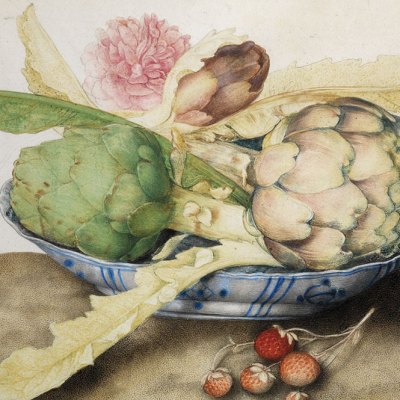A perfect carbonara is the simplest of dishes. It has four ingredients, not counting the pasta and a cucchiaio of cooking water. In Rome, though, you could quite easily discuss the recipe for hours: where to buy the best guanciale (pork cheek); the balance of yolks and whole eggs; and which type of pasta best embraces the creamy sauce (to which you should never add cream). There’s a combination of simplicity and fastidiousness here that’s repeated dish by dish across Italy, whether with the cucina povera of Naples or the fatty feasts of Bologna. Italian cooking is even better with the commentary switched on.
Something of this sensibility is apparent in ‘#Uffizidamangiare’, a series of short online videos created by the Uffizi in which leading Tuscan chefs riff on paintings of food in the collection or prepare dishes that the art has inspired. It’s certainly there in the film with Dario Cecchini, a meat man from Chianti who Anthony Bourdain once described as ‘the most famous and most respected butcher in Italy’. Cecchini’s love for his native Tuscany is so pronounced that he’s known to recite passages of Dante while flaunting his knife skills. Here, responding to a still life of a pantry by Jacopo Chimenti, Cecchini grills a vast costata alla fiorentina (rib-eye) over chunks of oak and holm oak; he insists on no further ingredients than ‘meat and fire’ but handles his steak with all the care of someone cradling a baby (he does not cook babies). The meat is served up artlessly, carved into slabs then piled around the bone. As Elizabeth David wrote of the bistecca alla fiorentina: ‘it is so large that there is simply no room, nor any necessity, for a vegetable on the plate with it.’
Pantry with pig’s head and trotter, calf’s head, turkey, poultry and other food (1624), Jacopo Chimenti (‘L’Empoli’). Gallerie degli Uffizi, Florence

The feeling for Tuscan traditions runs through these videos. That may give them a faint flavour of tourism adverts, but at a time when travel is nigh-on impossible they succeed in satisfying, however fleetingly, the desire to escape over the Alps. Fabio Picchi, founder of the great Cibrèo restaurant just north of Santa Croce, gives a monologue celebrating the fish and shellfish that tumble from a lad’s basket in a painting from Palazzo Pitti attributed to Giacomo Ceruti. The chef pulls the culinary world of the painting into the vivid present: evoking how its spider crab and sea bass, plump with eggs, might once have been cooked, fresh off the boat on Elba, and dreaming of preparing them himself.
Boy with a Basket of Fish (1736), Giacomo Ceruti (‘Il Pitocchetto’). Gallerie degli Uffizi, Florence

That there is continuity in Tuscan cuisine is hardly an original argument, but it’s a point neatly made here as the videos cut between historical canvases and contemporary kitchens. How much we learn about the art and food of the past varies from video to video, although there are morsels aplenty to savour. Picchi corrects the title of the painting that he’s discussing, observing that the crustacean it depicts is nothing like the aragosta (lobster) it has long been taken for; and in a delightful imaginative foray, he describes how the messy work of painting a spider crab must have chimed with how red juices will inevitably run down the forearms of anybody tucking into one. The Michelin-starred chef Marco Stabile, meanwhile, offers a sensitive reading of a still life by Giorgio de Chirico, with its grapes and peppers not frozen in time, he suggests, but alive to the mellowing of autumn.
Still Life with Peppers and Grapes (1930), Giorgio de Chirico. Gallerie degli Uffizi, Florence

It is diverting to fancy the Uffizi as a larder, a store cupboard of images waiting for something else to be invented from them. (A second pantry painting by Chimenti inspires another top Tuscan chef, Valeria Piccini, to create a dainty mallard dish.) The pastry chef Debora Massari does just that, confecting a diptych of dolci in homage to Raphael’s portraits of Agnolo and Maddalena Doni. They are whimsically allegorical, two perfect circles arranged into a sugary infinity symbol meant to signify the couple’s everlasting union. But here, too, there are nice historical insights: the cakes incorporate crema biancomangiare (blancmange), Massari notes, which likely has its origins in the Arab world and became popular at the Medici court.
Some Italian commentators have criticised the Uffizi in the past year, complaining of the frivolity of some of its digital content – and particularly for playful posts on its social-media accounts. But until the Italian museum reforms of 2015, the Uffizi had almost no digital presence. It now looks like a serious museum that is having serious fun. If chefs on paintings aren’t your thing, you might try its ‘Latine Loquimur’ video series instead: further films that focus on individual works, but this time discussed in Latin.
Visit the Uffizi website to watch Uffizi da Mangiare.
From the March 2021 issue of Apollo. Preview and subscribe here.


